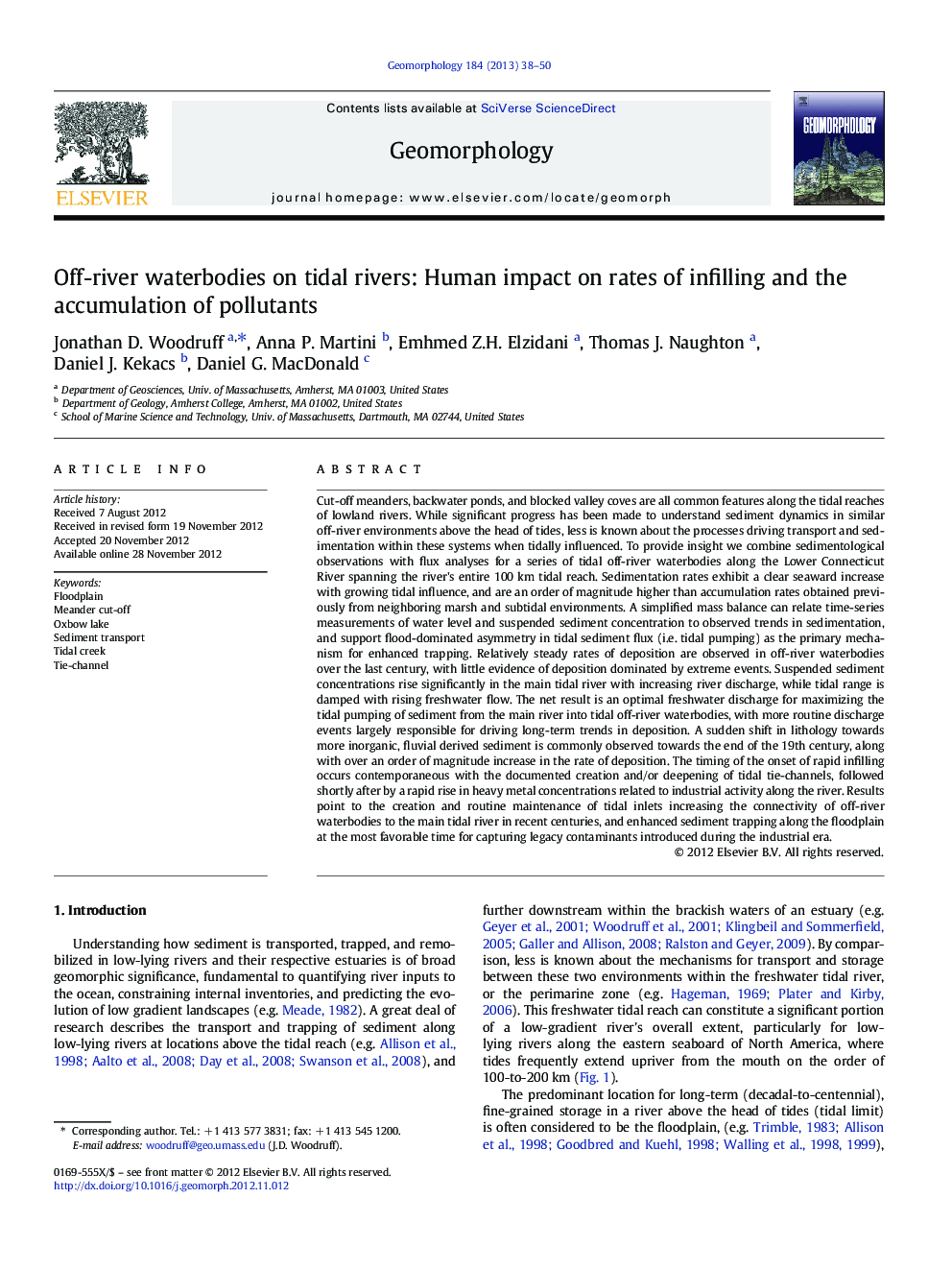| کد مقاله | کد نشریه | سال انتشار | مقاله انگلیسی | نسخه تمام متن |
|---|---|---|---|---|
| 4684950 | 1635465 | 2013 | 13 صفحه PDF | دانلود رایگان |
Cut-off meanders, backwater ponds, and blocked valley coves are all common features along the tidal reaches of lowland rivers. While significant progress has been made to understand sediment dynamics in similar off-river environments above the head of tides, less is known about the processes driving transport and sedimentation within these systems when tidally influenced. To provide insight we combine sedimentological observations with flux analyses for a series of tidal off-river waterbodies along the Lower Connecticut River spanning the river's entire 100 km tidal reach. Sedimentation rates exhibit a clear seaward increase with growing tidal influence, and are an order of magnitude higher than accumulation rates obtained previously from neighboring marsh and subtidal environments. A simplified mass balance can relate time-series measurements of water level and suspended sediment concentration to observed trends in sedimentation, and support flood-dominated asymmetry in tidal sediment flux (i.e. tidal pumping) as the primary mechanism for enhanced trapping. Relatively steady rates of deposition are observed in off-river waterbodies over the last century, with little evidence of deposition dominated by extreme events. Suspended sediment concentrations rise significantly in the main tidal river with increasing river discharge, while tidal range is damped with rising freshwater flow. The net result is an optimal freshwater discharge for maximizing the tidal pumping of sediment from the main river into tidal off-river waterbodies, with more routine discharge events largely responsible for driving long-term trends in deposition. A sudden shift in lithology towards more inorganic, fluvial derived sediment is commonly observed towards the end of the 19th century, along with over an order of magnitude increase in the rate of deposition. The timing of the onset of rapid infilling occurs contemporaneous with the documented creation and/or deepening of tidal tie-channels, followed shortly after by a rapid rise in heavy metal concentrations related to industrial activity along the river. Results point to the creation and routine maintenance of tidal inlets increasing the connectivity of off-river waterbodies to the main tidal river in recent centuries, and enhanced sediment trapping along the floodplain at the most favorable time for capturing legacy contaminants introduced during the industrial era.
► Off-river waterbodies are prominent features along tidal rivers.
► Tidal pumping results in enhanced deposition with growing tidal influence.
► Trapping occurs primarily during seasonal floods rather than during extreme discharge.
► Human maintenance of inlets has resulted in raping infilling in recent centuries.
► Onset of maintenance at the optimal time for trapping industrial contaminants
Journal: Geomorphology - Volume 184, 15 February 2013, Pages 38–50
